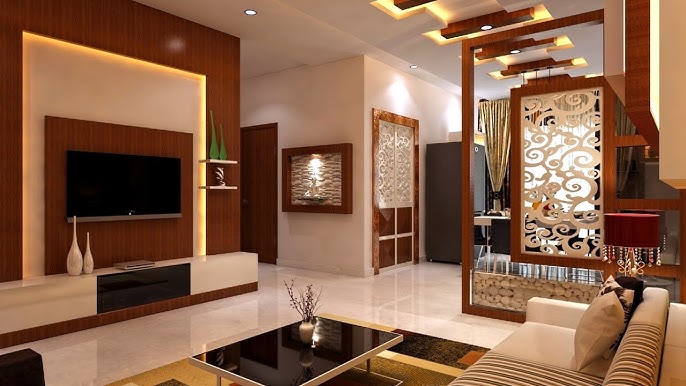Change Your Home With Crucial Concepts of Interior Decoration and Visual Appeals
By comprehending the influence of color theory and the significance of structure and patterns, one can create areas that are not just visually enticing yet also deeply individual. Achieving this stability includes more than simple design; it includes a critical setup and a keen understanding of exactly how each component interacts within an area.
Understanding Shade Concept
Recognizing the concepts of shade theory allows designers to create rooms that reverberate mentally with residents while meeting useful demands. Each classification plays a vital function in developing consistency within a room.
The mental influence of shades is extensive; cozy tones such as reds and oranges evoke energy and warmth, while trendy tones like blues and greens promote calmness and serenity. The usage of complementary shades boosts aesthetic rate of interest, developing striking contrasts that can raise a room's allure.
Neutral colors, on the various other hand, work as a flexible backdrop, allowing various other design aspects to radiate. It is necessary to consider aspects such as lighting and the space's function when picking a color palette, as these can modify the understanding of shades throughout the day.
Eventually, a well-considered color design can transform a room, promoting a sense of convenience and design that aligns with the citizens' preferences. Proficiency of color theory is, for that reason, an essential skill for any type of interior developer intending to create harmonious and inviting settings.
Achieving Balance in Layout
Just how can designers achieve a sense of equilibrium in their spaces? Attaining balance in design is essential to developing unified interiors.
Unbalanced balance, on the other hand, depends on differing aspects that still attain a cohesive look. This method permits even more vibrant and informal setups, offering rate of interest while maintaining stability. By meticulously choosing differing dimensions, colors, and appearances, developers can produce an aesthetically engaging space that really feels well balanced yet energetic.
Radial balance stresses a central prime focus with components radiating exterior. This style is typically seen in circular formats, where furniture and style produce a cohesive surround that attracts the eye internal.
Ultimately, attaining balance calls for thoughtful factor to consider of scale, percentage, and the connections in between aspects. miami interior design. By skillfully using these equilibrium principles, designers can change spaces right into environments that feel both cosmetically pleasing and functionally harmonious, improving the overall experience for owners
Significance of Spatial Understanding

An eager feeling of spatial recognition enables designers to determine prime focus within a space, assisting the audience's interest to essential functions while preserving an overall sense of unity. It also helps in the strategic placement of lighting, which can substantially affect the assumption of area and state of mind. Furthermore, recognizing spatial partnerships makes it possible for the developer to deal with the certain requirements of occupants, making certain that each location serves its designated objective without endangering appearances.
Ultimately, spatial awareness is critical for making best use of the potential of any indoor space. By carefully taking into consideration the interplay in between measurements, design, and function, developers can produce environments that not just meet functional requirements yet additionally evoke a feeling of comfort and appeal, enhancing the general living experience.
Integrating Texture and Patterns
Accepting a varied series of structures and patterns internet can substantially improve the visual and tactile allure of an interior space. The strategic use numerous materials-- such as wood, steel, fabric, and stone-- develops deepness and interest, making a space really feel more inviting and vibrant. As an example, combining smooth surfaces with rough appearances can establish a balance that draws the eye and engages the senses.
When incorporating patterns, think about both range and repeating. Large patterns can work as focal factors, while smaller sized, refined styles can enhance various other aspects without overwhelming the area. Layering patterns, such as pairing floral pillows with striped throws, adds complexity and a feeling of harmony if implemented thoughtfully.
It is additionally crucial to keep a cohesive shade scheme, making certain that appearances and patterns work with each other instead of contend for attention. By choosing a couple of key appearances and patterns, you can create an unified aesthetic that shows your individual style while boosting the overall setting of the space. Eventually, the careful unification of these elements can change a mundane area into a sophisticated setting rich with personality and heat.
Customizing Your Room
Developing an area that shows your character is essential to achieving an absolutely inviting setting. Customization in interior layout allows you to infuse your unique design and interests into your home, changing it from a plain shelter into a sanctuary that talks with that you are. Begin by selecting a color combination that reverberates with your feelings-- strong colors can invigorate, while soft tones provide harmony.
Include art work and decor that show your passions, whether it be travel, nature, or abstract ideas. Presenting personal collections, such as books, photos, or keepsakes, can stimulate cherished memories and produce focal points within a room. Additionally, think about customizing functional pieces, like upholstered furnishings, to line up with your visual choices.

Verdict
To conclude, the improvement of a home via the important principles of interior style and looks requires an extensive understanding of shade theory, balance, spatial understanding, texture, and personalization. Each aspect adds significantly to creating an unified and practical living environment - miami interior design. By attentively integrating these concepts, individuals can improve the aesthetic appeal and emotional resonance of their spaces, inevitably promoting a home that mirrors distinct identities while providing comfort and practicality